Upside down eggplant gardening might sound like something out of a Dr. Seuss book, but trust me, it’s a real and surprisingly effective way to grow these delicious purple beauties! Forget sprawling vines and wrestling with cages – we’re flipping the script (literally!) and exploring a method that’s been gaining popularity for its space-saving and pest-deterrent benefits.
While the exact origins of upside-down gardening are a bit hazy, the concept of suspending plants has roots in ancient practices. Think of the Hanging Gardens of Babylon, a testament to human ingenuity in manipulating plant growth. Though not exactly the same, the spirit of innovation and maximizing limited space is definitely there! Today, with smaller living spaces and a growing desire for fresh, homegrown produce, upside-down gardening is experiencing a major resurgence.
Why should you consider upside down eggplant gardening? Well, imagine harvesting plump, juicy eggplants without battling weeds, bending over aching backs, or constantly spraying pesticides. This method naturally elevates your precious eggplants, keeping them away from ground-dwelling pests and diseases. Plus, it’s a fantastic solution for apartment dwellers or anyone with limited garden space. I’m excited to share some simple DIY tricks that will have you enjoying fresh, homegrown eggplant in no time, even if you only have a balcony!
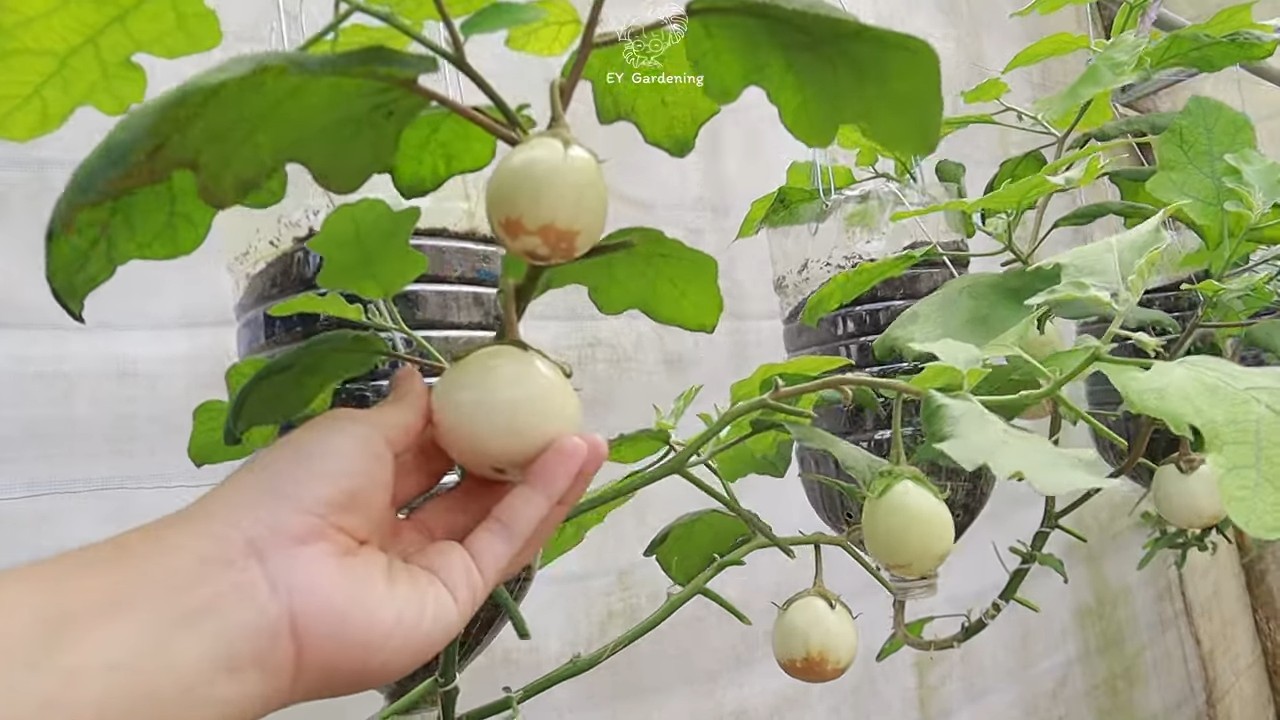
Growing Eggplants Upside Down: A Fun and Productive DIY Project
Hey there, fellow gardening enthusiasts! I’m so excited to share one of my favorite gardening hacks with you: growing eggplants upside down! It’s a fantastic way to save space, deter pests, and add a unique visual element to your garden or balcony. Plus, it’s surprisingly easy to do. Let’s dive in!
Why Grow Eggplants Upside Down?
Before we get started, you might be wondering why you’d even *want* to grow eggplants upside down. Here are a few compelling reasons:
* Space Saving: Perfect for small gardens, patios, or balconies. You only need vertical space!
* Pest Control: Eggplants hanging in the air are less susceptible to soil-borne pests and diseases.
* Improved Air Circulation: Better airflow around the plant reduces the risk of fungal problems.
* Easier Harvesting: No more bending over to pick your eggplants!
* Unique Aesthetic: Let’s be honest, it looks pretty cool!
What You’ll Need
Okay, let’s gather our supplies. This is what you’ll need to create your upside-down eggplant planters:
* 5-Gallon Buckets (or similar sized containers): One per eggplant plant. Make sure they’re sturdy and have drainage holes at the bottom (which will become the top).
* Eggplant Seedlings: Choose healthy, vigorous seedlings from your local nursery or start your own from seed. Smaller varieties tend to do better upside down.
* Potting Mix: A high-quality potting mix that drains well is crucial. Avoid using garden soil, as it can compact and suffocate the roots.
* Landscape Fabric or Burlap: To line the hole and prevent soil from falling out.
* Utility Knife or Drill: For creating the hole in the bottom of the bucket.
* Measuring Tape or Ruler: To accurately measure the hole size.
* Watering Can or Hose: For watering your plants.
* Fertilizer: A balanced, slow-release fertilizer to feed your eggplants.
* Gloves: To protect your hands.
* Eye Protection: Safety first!
Step-by-Step Instructions: Building Your Upside-Down Eggplant Planter
Alright, let’s get our hands dirty! Here’s how to build your upside-down eggplant planter:
1. Prepare the Bucket:
* First, clean your 5-gallon bucket thoroughly.
* Next, determine the center of the bottom of the bucket (this will be the top when it’s hanging).
* Using your measuring tape or ruler, measure a circle that’s slightly larger than the root ball of your eggplant seedling. Usually, a 3-4 inch diameter circle is sufficient.
* Carefully use your utility knife or drill to cut out the circle. Be cautious and take your time to avoid cracking the plastic.
2. Line the Hole:
* Cut a piece of landscape fabric or burlap that’s slightly larger than the hole you just created.
* Insert the fabric or burlap into the hole, creating a sort of “sling” to hold the soil in place and support the eggplant seedling. Make sure it extends a few inches beyond the hole on all sides. This will prevent the soil from falling out when you invert the bucket.
3. Add Soil and Plant the Seedling:
* Gently turn the bucket upside down (so the hole is facing down).
* Carefully insert the root ball of your eggplant seedling through the hole, making sure the leaves are facing downwards.
* Gently spread the roots out a bit inside the bucket.
* While holding the seedling in place, start adding potting mix to the bucket. Fill it up to about 2-3 inches from the top.
* Gently pat the soil down to secure the seedling.
4. Water Thoroughly:
* Water the soil thoroughly until water drains out of the drainage holes (which are now at the top). This will help settle the soil and ensure the roots are well-hydrated.
5. Add Fertilizer:
* Sprinkle a slow-release fertilizer on top of the soil, following the instructions on the fertilizer package. This will provide your eggplant with the nutrients it needs to grow and produce fruit.
6. Hanging Your Planter:
* Now comes the fun part – hanging your planter! You’ll need a sturdy hook, chain, or rope to hang the bucket.
* Make sure the hook or support can handle the weight of the bucket filled with soil and a mature eggplant plant.
* Attach the hook, chain, or rope to the handle of the bucket.
* Carefully lift the bucket and hang it in a sunny location that receives at least 6-8 hours of sunlight per day.
Caring for Your Upside-Down Eggplant
Now that your eggplant is hanging upside down, it’s important to provide it with the proper care to ensure it thrives. Here are some tips:
* Watering: Water your eggplant regularly, especially during hot, dry weather. Check the soil moisture by sticking your finger into the soil. If the top inch feels dry, it’s time to water. Water slowly and deeply until water drains out of the drainage holes.
* Fertilizing: Continue to fertilize your eggplant every few weeks with a balanced fertilizer. You can also use a liquid fertilizer for a quick boost of nutrients.
* Pruning: Prune your eggplant regularly to encourage branching and fruit production. Remove any yellowing or dead leaves. You can also pinch off the tips of the branches to promote bushier growth.
* Pest Control: Keep an eye out for pests such as aphids, flea beetles, and spider mites. If you notice any pests, treat them with an organic insecticide or insecticidal soap.
* Support: As your eggplant grows and produces fruit, it may need additional support. You can use twine or netting to support the branches and prevent them from breaking.
* Sunlight: Ensure your upside-down eggplant receives at least 6-8 hours of direct sunlight each day. If you live in a particularly hot climate, you may need to provide some afternoon shade to prevent the plant from getting scorched.
* Rotation: Gently rotate the bucket every few days to ensure even sunlight exposure to all parts of the plant. This will help prevent the plant from leaning too much in one direction.
Troubleshooting
Even with the best care, you might encounter some challenges when growing eggplants upside down. Here are a few common problems and how to fix them:
* Plant Wilting: This could be due to underwatering, overwatering, or transplant shock. Check the soil moisture and adjust your watering schedule accordingly. If the plant is newly transplanted, give it some time to adjust.
* Yellowing Leaves: This could be a sign of nutrient deficiency. Fertilize your eggplant with a balanced fertilizer.
* Lack of Fruit: This could be due to insufficient sunlight, poor pollination, or lack of nutrients. Make sure your eggplant is getting enough sunlight and fertilize it regularly. You can also hand-pollinate the flowers by gently shaking the plant or using a small brush to transfer pollen from one flower to another.
* Pest Infestation: Treat any pest infestations promptly with an organic insecticide or insecticidal soap.
* Fruit Rot: This could be due to fungal disease. Ensure good air circulation around the plant and avoid overhead watering. Remove any affected fruit immediately.
Choosing the Right Eggplant Variety
Not all eggplant varieties are created equal when it comes to growing them upside down. Smaller, more compact varieties tend to do better in containers. Here are a few varieties that I’ve had success with:
* Fairy Tale: This variety produces small, elongated fruits with a mild flavor.
* Hansel: Similar to Fairy Tale, but with slightly larger fruits.
* Little Fingers: This variety produces clusters of small, finger-like fruits.
* Patio Baby: A compact variety that’s perfect for containers.
* Thai Green: Small round green eggplants that are very productive.
Harvesting Your Eggplants
The moment you’ve been waiting for! Harvesting your eggplants is the most rewarding part of the process. Here’s how to do it:
* Check for Ripeness: Eggplants are typically ready to harvest when they are firm, glossy, and have reached their mature size and color. The skin should be smooth and unblemished.
* Use Pruning Shears or a Sharp Knife: Cut the eggplant from the plant, leaving about an inch of stem attached.
* Handle with Care: Eggplants are delicate and can bruise easily, so handle them with care.
* Harvest Regularly: Harvesting your egg
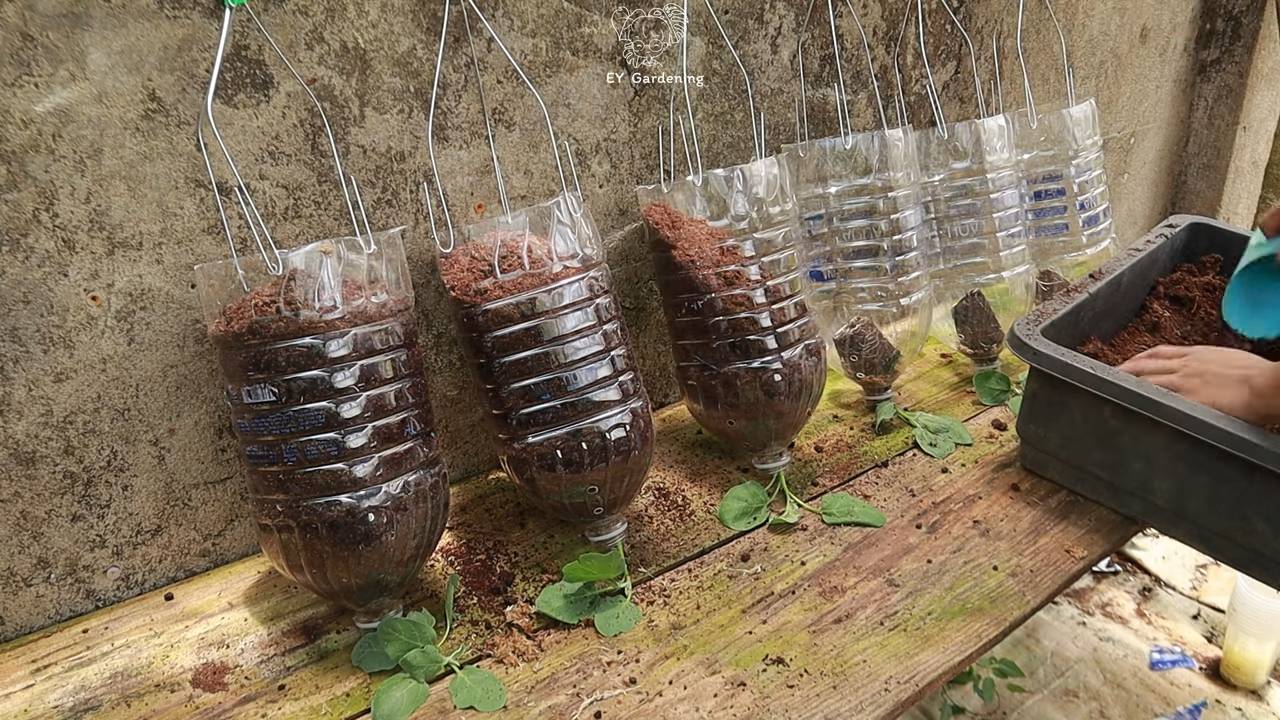
Conclusion
So, there you have it! The upside down eggplant gardening method, while seemingly unconventional, offers a surprisingly effective and rewarding way to cultivate these delicious vegetables. We’ve explored the numerous benefits, from space-saving advantages perfect for urban gardeners to the natural pest control that comes with hanging your eggplants high. It’s a technique that not only simplifies gardening but also adds a unique visual element to your outdoor space.
But why is this DIY trick a must-try? Beyond the novelty, it’s about accessibility and efficiency. For those with limited garden space, particularly apartment dwellers or those with small balconies, upside down eggplant gardening opens up a world of possibilities. Imagine fresh, homegrown eggplants gracing your table, even without a traditional garden plot. Furthermore, the reduced risk of soilborne diseases and pests translates to healthier, more productive plants, ultimately leading to a more bountiful harvest.
Don’t be afraid to experiment! While we’ve focused on the classic eggplant, this method can be adapted for other vegetables as well. Consider trying it with cherry tomatoes, peppers, or even herbs. The key is to choose plants with relatively compact growth habits and sturdy stems that can support the weight of the developing fruit. You can also explore different container options, from repurposed buckets to specially designed upside down planters. Remember to adjust your watering schedule based on the container size and the prevailing weather conditions. Adding a slow-release fertilizer to the potting mix can also provide your plants with a steady supply of nutrients throughout the growing season.
We’ve covered the basics, but the real magic happens when you put this knowledge into practice. The beauty of DIY gardening lies in the experimentation and the personal touch you bring to the process. So, gather your supplies, choose your favorite eggplant variety, and embark on this exciting gardening adventure. We are confident that you will find the upside down eggplant gardening method to be a fun, rewarding, and ultimately delicious experience.
We encourage you to try this method and share your experiences with us! Let us know what worked well, what challenges you encountered, and any tips or tricks you discovered along the way. Your feedback will not only help us refine this guide but also inspire other gardeners to embrace the joy of upside down eggplant gardening. Share your photos and stories on our social media channels using #UpsideDownEggplantGardening – we can’t wait to see your creations! Happy gardening!
Frequently Asked Questions (FAQ)
What are the best eggplant varieties for upside down gardening?
Choosing the right eggplant variety is crucial for success with upside down gardening. Look for compact or dwarf varieties that don’t grow too large and heavy. Some excellent choices include:
* Fairy Tale: This variety produces small, slender, and sweet-tasting eggplants that are perfect for containers.
* Hansel: Similar to Fairy Tale, Hansel eggplants are compact and produce clusters of small, glossy fruits.
* Patio Baby: As the name suggests, Patio Baby is specifically bred for container gardening and produces small, manageable eggplants.
* Little Fingers: This variety produces long, thin eggplants that are easy to harvest and have a mild flavor.
* Thai Green: These small, round, green eggplants are perfect for Asian cuisine and thrive in containers.
Avoid larger varieties like Black Beauty, as they can become too heavy for the container and may require additional support.
How often should I water my upside down eggplant plant?
Watering frequency depends on several factors, including the size of the container, the weather conditions, and the type of potting mix you’re using. Generally, you’ll need to water your upside down eggplant plant more frequently than plants in the ground, as containers tend to dry out faster.
Check the soil moisture daily by sticking your finger about an inch into the soil. If the soil feels dry to the touch, it’s time to water. Water thoroughly until water drains out of the bottom of the container. Avoid overwatering, as this can lead to root rot.
During hot, sunny weather, you may need to water your plant once or even twice a day. In cooler, cloudy weather, you may only need to water every other day.
What kind of potting mix should I use for upside down eggplant gardening?
The right potting mix is essential for healthy eggplant growth. Avoid using garden soil, as it can be too heavy and compact for containers. Instead, choose a high-quality, well-draining potting mix specifically formulated for container gardening.
Look for a mix that contains ingredients like peat moss, perlite, and vermiculite. These ingredients help to retain moisture while also providing good drainage and aeration. You can also add some compost to the potting mix to provide additional nutrients.
Avoid potting mixes that contain a lot of clay, as these can become waterlogged and suffocate the roots.
How do I fertilize my upside down eggplant plant?
Eggplants are heavy feeders and require regular fertilization to produce a bountiful harvest. Start fertilizing your plant about two weeks after transplanting it into the container.
Use a balanced fertilizer with an NPK ratio of 10-10-10 or 14-14-14. You can use either a liquid fertilizer or a slow-release granular fertilizer.
If using a liquid fertilizer, dilute it according to the package directions and apply it every two weeks. If using a slow-release fertilizer, mix it into the potting mix at the time of planting and then reapply it every few months.
Avoid over-fertilizing, as this can burn the roots and damage the plant.
How do I protect my upside down eggplant plant from pests and diseases?
Upside down gardening naturally reduces some pest and disease problems, but it’s still important to take precautions. Regularly inspect your plant for signs of pests or diseases.
Common eggplant pests include aphids, flea beetles, and spider mites. You can control these pests by spraying your plant with insecticidal soap or neem oil.
Common eggplant diseases include fungal diseases like early blight and verticillium wilt. You can prevent these diseases by providing good air circulation, avoiding overwatering, and using a fungicide if necessary.
Consider companion planting with herbs like basil or marigolds, which can help repel pests.
How much sunlight does my upside down eggplant plant need?
Eggplants need at least 6-8 hours of direct sunlight per day to thrive. Choose a location for your upside down eggplant plant that receives plenty of sunlight. If you live in a hot climate, you may need to provide some afternoon shade to prevent the plant from getting scorched.
How do I harvest my eggplants?
Harvest your eggplants when they are firm, glossy, and have reached their mature size. The skin should be smooth and unblemished. Use a sharp knife or pruning shears to cut the eggplant from the plant, leaving about an inch of stem attached.
Harvesting eggplants regularly will encourage the plant to produce more fruit.
Can I reuse the potting mix from my upside down eggplant container?
It’s generally not recommended to reuse potting mix from containers, as it can harbor pests and diseases. However, if you choose to reuse it, you should sterilize it first by baking it in the oven at 180 degrees Fahrenheit for 30 minutes. You should also amend it with fresh compost and fertilizer to replenish the nutrients.
What if my upside down eggplant plant starts to droop?
Drooping can be caused by several factors, including underwatering, overwatering, heat stress, or pest infestation. Check the soil moisture and water accordingly. If the plant is drooping due to heat stress, move it to a shadier location. Inspect the plant for pests and treat accordingly.
Can I grow upside down eggplants indoors?
While possible, growing upside down eggplants indoors can be challenging due to the need for intense light. You’ll need a very sunny south-facing window or, more likely, supplemental grow lights. Ensure proper air circulation and monitor for pests and diseases, which can be more prevalent indoors.
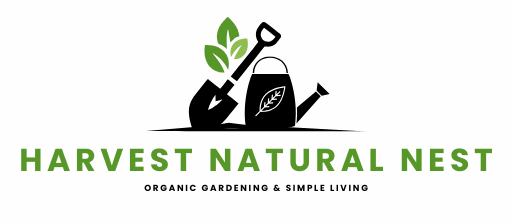
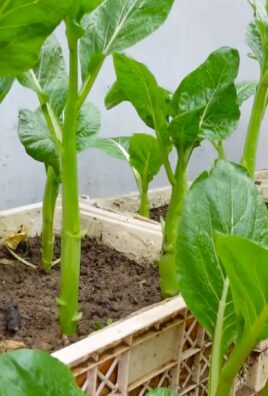
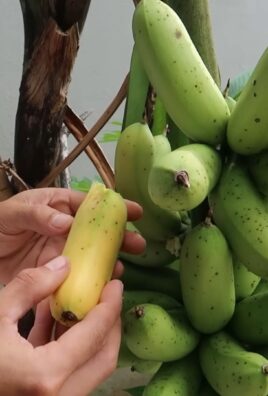

Leave a Comment